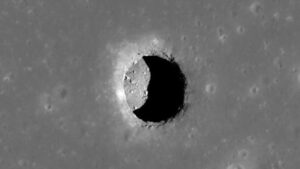NASA announced Tuesday that it observed one of the closest ever instances of a black hole destroying a star — formally called a “tidal disruption event”.
Black holes are basically areas of extremely high gravity, so the way they destroy objects nearby is intuitive: they pull them apart.
That’s the case in event AT2021ehb, which is occurring about 250 million light years away from Earth in the centre of another galaxy. In it, a black hole about 10 million times the mass of our Sun (or roughly the difference between the Titanic and a bowling ball) turned a star that spun within its reach into nothing but a ribbon of gas.
A cosmic laboratory. 🔭
A recent and unusually close glimpse of a black hole snacking on a star is helping scientists understand complex black hole feeding behaviors. https://t.co/CNNvklxnf1 pic.twitter.com/QRnLE8dzKH
— NASA JPL (@NASAJPL) December 20, 2022
NASA’s Nuclear Spectroscopic Telescopic Array (NuSTAR) satellite also observed a super-heated structure called a corona above the centre of the black hole — and provided a detailed glimpse of a tidal disruption event.
According to NASA, it was the fifth-closest instance ever observed of a black hole consuming a star.
The fact that it happened so close by made studying it unusually straightforward. And a team of researchers, who published their findings in the Astrophysical Journal, think the event can help us learn more about what happens to material that black holes capture in the moments before they fully devour it.
“Tidal disruption events are a sort of cosmic laboratory,” said study co-author Suvi Gezari, an astronomer at the Space Telescope Science Institute in Baltimore. “They’re our window into the real-time feeding of a massive black hole lurking in the centre of a galaxy.”
NASA creates a violent vision of tidal disruption events.
It happens fast
First, the black hole draws the star inward. When it’s in range, it implodes. Then, the gas cloud starts whipping around the perimeter, colliding with itself. This process, NASA thinks, creates shock waves and outward flows of gas that generate visible light. (It also emits wavelengths invisible to the human eye, like ultraviolet light and X-rays.)
The material then begins to settle into a disk rotating around the black hole like water circling a drain.
It happens fast. From start to finish, a tidal disruption event only covers a matter of weeks or months. AT2021ehb took place over just 100 days.






